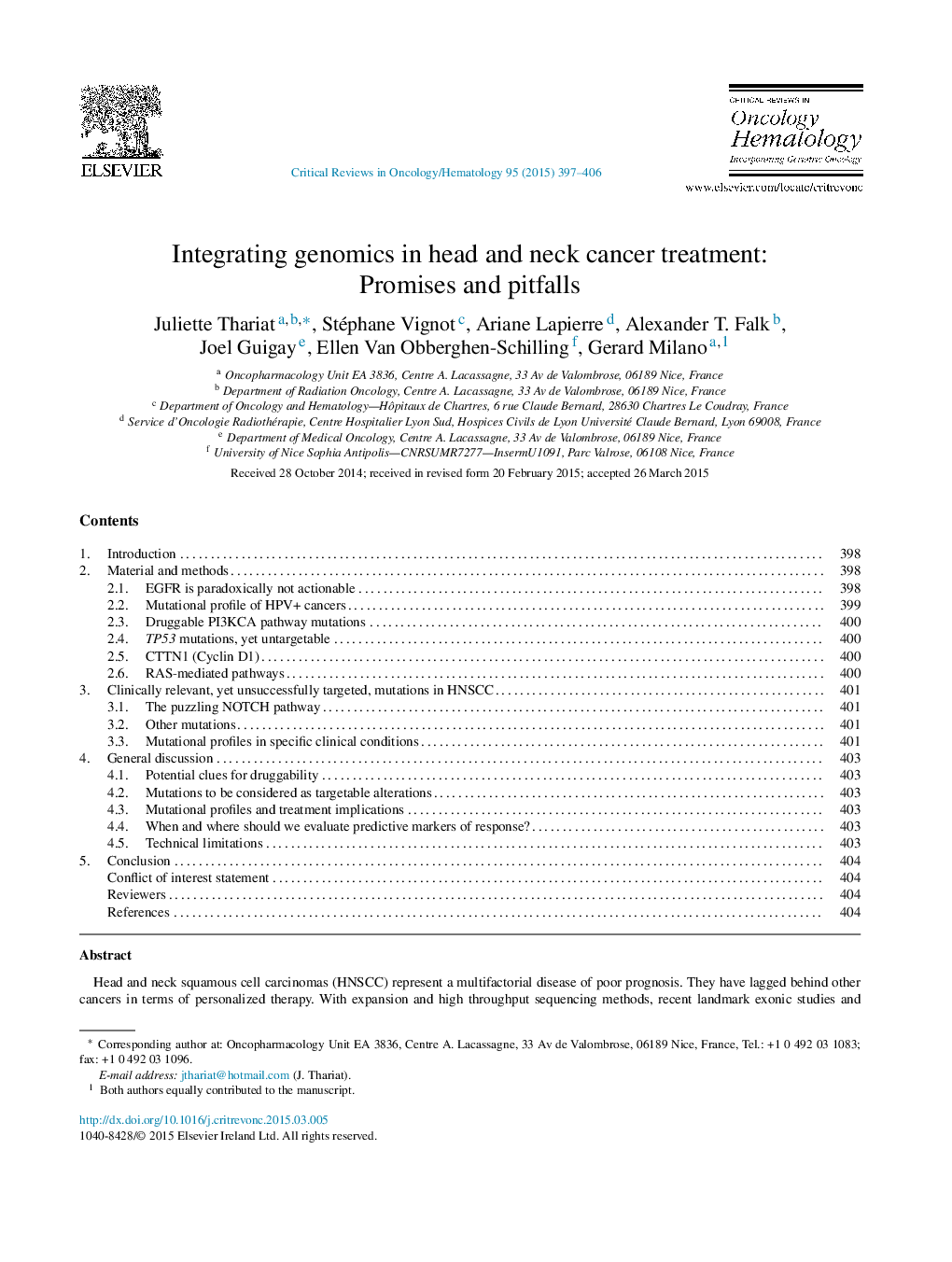| کد مقاله | کد نشریه | سال انتشار | مقاله انگلیسی | نسخه تمام متن |
|---|---|---|---|---|
| 3328710 | 1212335 | 2015 | 10 صفحه PDF | دانلود رایگان |
• Head and neck squamous cell carcinomas (HNSCC) represent a multifactorial disease where mutational profiles and rates vary widely.
• The rate of mutations in HPV+ cancers is much lower than in tobacco/alcohol-related cancers.
• Somatic driver mutation analyses show that relatively few driver genes are druggable in HNSCC and that tumor suppressor gene alterations prevail, including TP53.
• The functions of the NOTCH pathway remain a area of controversy.
• More mature for therapeutic applications is the oncogenic PI3K pathway.
Head and neck squamous cell carcinomas (HNSCC) represent a multifactorial disease of poor prognosis. They have lagged behind other cancers in terms of personalized therapy. With expansion and high throughput sequencing methods, recent landmark exonic studies and Cancer Genome Atlas data have identified genes relevant to carcinogenesis and cancer progression. Mutational profiles and rates vary widely depending on exposure to carcinogens, anatomic subsites and human papilloma virus (HPV) infection. Tumors may exhibit specific, tissue-specific, not exclusively HPV-related, gene alterations, such those observed in oral cavity cancers in Asia or Occident. Except for the PI3K pathway, the rate of mutations in HPV+ cancers is much lower than in tobacco/alcohol-related cancers. Somatic driver mutation analyses show that relatively few driver genes are druggable in HNSCC and that tumor suppressor gene alterations prevail. More mature for therapeutic applications is the oncogenic PI3K pathway, with preclinical human xenograft models suggesting that PI3KCA pathway mutations may be used as predictive biomarkers and clinical data showing efficacy of mTOR/Akt inhibitors. Therapeutic guidance, to date, relies on classical histoprognostic factors, anatomic subsite and HPV status, with integration of hierarchized supervised mutational profiling to provide additional therapeutic options in advanced HNSCC in a near future. Unsupervised controlled genomic analyses remain necessary to unravel potentially relevant genes.
Journal: Critical Reviews in Oncology/Hematology - Volume 95, Issue 3, September 2015, Pages 397–406
